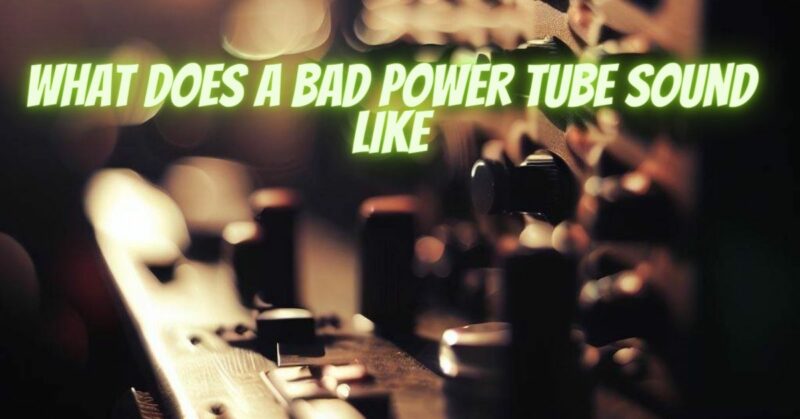Power tubes are critical components in guitar amplifiers and high-fidelity audio systems, responsible for amplifying the audio signal to drive speakers. Over time, power tubes can degrade or fail, leading to various audio anomalies. Recognizing the signs of a bad power tube is essential for maintaining optimal audio performance. This article aims to shed light on what a bad power tube sounds like, enabling users to identify issues and troubleshoot power tube problems effectively.
- Distorted Sound
One of the most common signs of a bad power tube is distorted sound. As the tube deteriorates, it may introduce unwanted harmonics and artifacts into the audio signal, resulting in a gritty, fuzzy, or harsh tone. This distortion can be subtle at first but becomes more pronounced as the tube further degrades.
- Reduced Output Volume
A failing power tube may lead to a noticeable drop in output volume. The amplifier might not achieve its usual volume levels, even when the volume controls are pushed to their maximum. This reduced output can be particularly evident when comparing the amp’s performance to its previous state.
- Excessive Hum or Noise
Bad power tubes can introduce hum, which is a low-frequency noise that becomes more apparent at higher volume levels. The hum might be constant or vary with changes in amplifier settings or guitar volume. Additionally, faulty power tubes can produce hiss or crackling noises, especially during warm-up.
- Imbalanced Sound
In a multi-tube power amplifier, a bad power tube can lead to imbalanced sound output. You may notice that one channel or speaker is significantly louder or softer than the others, affecting the stereo imaging and soundstage.
- Unstable Bias
Power tubes require a proper bias voltage to operate optimally and avoid premature failure. A bad power tube may cause fluctuations in the bias setting, resulting in unstable performance and variable sound quality.
- Loss of Sustain
As power tubes degrade, they may lose their ability to sustain notes, especially when playing at higher volumes. This can affect the instrument’s expressiveness and overall playing experience.
Troubleshooting and Replacing Bad Power Tubes
If you suspect a bad power tube, follow these troubleshooting steps:
- Visual Inspection: Examine the power tubes for physical defects, such as dark spots on the glass, white oxidation on the pins, or signs of arcing. These can indicate tube failure.
- Swap Test: Swap the suspected bad power tube with a known good tube of the same type and reevaluate the sound. If the issue persists, the tube is likely not the problem. If the issue moves with the tube, it confirms a tube-related issue.
- Bias Measurement: Measure the bias voltage and current to ensure the power tubes are operating within the manufacturer’s recommended specifications. Unstable bias readings may indicate a bad power tube or other related issues.
When replacing bad power tubes, it’s essential to install a matched set. Matching ensures balanced performance and extends the lifespan of the new tubes.
Recognizing the signs of a bad power tube is crucial for maintaining optimal audio performance in your amplifier or audio system. Symptoms like distorted sound, reduced output volume, hum, imbalanced sound, unstable bias, and loss of sustain can indicate power tube issues. By employing effective troubleshooting techniques and replacing faulty tubes with matched sets, users can ensure a rich, clear, and distortion-free audio experience, allowing them to fully enjoy the capabilities of their amplifier or audio system.


